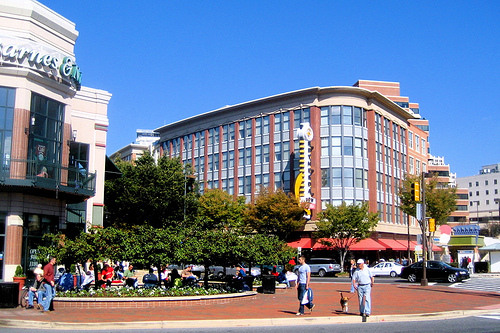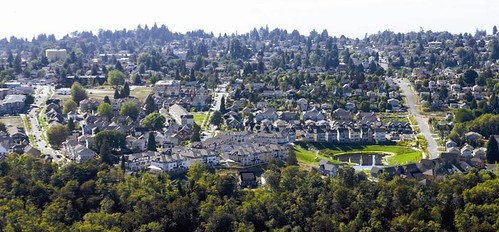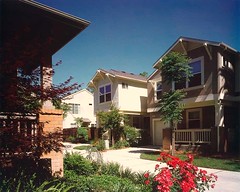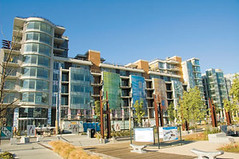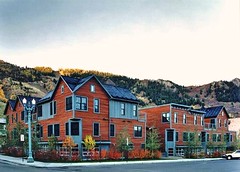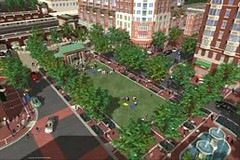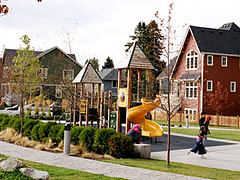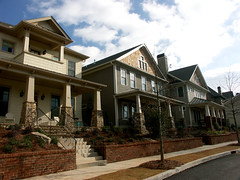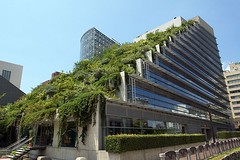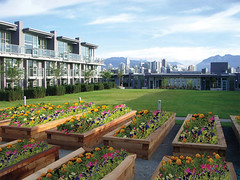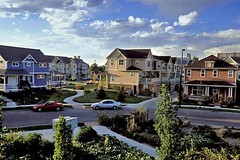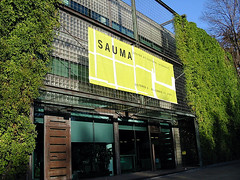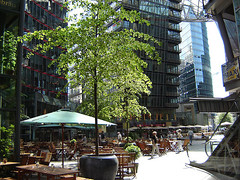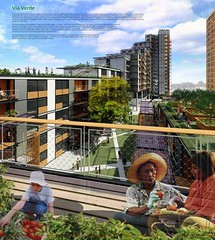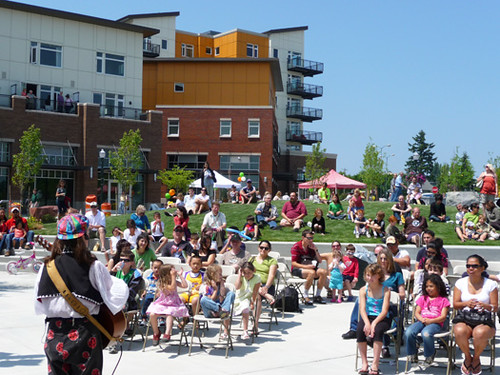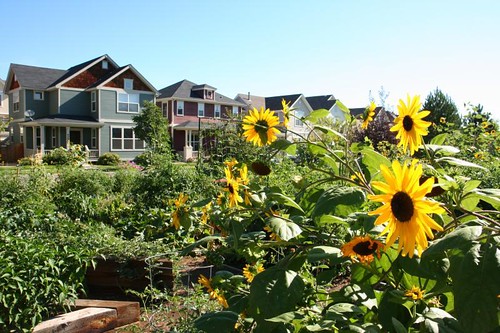Addressing the environmental paradox of smart growth: a gallery of green density

Posted April 12, 2010 at 1:27PM
As noted in my previous post, there is no question that sustainable land use requires, among other things, neighborhood density. Smart growth based on walkable neighborhoods, transportation choices, nearby amenities and the accommodation of an increasingly diverse society is the only way we can limit per-capita impacts, and thus total impacts, to a manageable level.
But, as I also wrote then, we must be honest with ourselves if we are to get this right: Environmental impacts will occur with development; to limit them, we must concentrate them, and this can mean increasing them in some places. This is what I call "the environmental paradox of smart growth." Only if we understand the paradox can we address it. Only if we address it can we really create better places in which to live, work, and play – and surely that, not just lowering pollution numbers, must be our real goal.
This is the second of two posts I am writing on the subject, in conjunction with a presentation I am giving at the annual meeting of the American Planning Association. Part one appeared last Friday.
To mitigate and compensate for the environmental and community impacts that can accompany compact development if we do not plan carefully - such as increased local emissions and traffic congestion, local stormwater runoff, and limited green space, among others - I believe we must aspire to not just good places but great ones. As I wrote before, we should build to appropriate scale, in many cases with moderation; we should include green infrastructure; we should provide an array of transportation choices; and we should provide parks and civic amenities.
I may not be able to sell a high-rise canyon to the public as an example of smart growth, but fortunately there are models that we can hold up as good ambassadors for our cause and that we can emulate in future development. Indeed, I think it is important that we settle for no less. Here are images of 14 such places, for which I thank their developers and architects as I congratulate them on their excellent work. (Regular readers will have seen some of these in other contexts.) Enjoy, and spread the word:
Left, Sacramento's Metro Square includes 20 single-family homes per acre. Right, Vancouver's Millennium Water (formerly the Olympic Village) will include 148 homes per acre.
Left, the small-town infill project Third Street Cottages in Langley, Washington, comprises 12 homes per acre. Right, Benedict Commons, workforce housing in Aspen, Colorado, looks like a collection of two- and three-story buildings; it's actually a single building containing a surprising 78 homes per acre.
Left, Rockville, Maryland's transit-oriented Twinbrook Station has earned a LEED-ND gold level certification; it includes a central green square and still provides 61 homes per acre gross.* Right, Seattle's award-winning, mixed-income High Point sports the country's most advanced green stormwater management while still providing 12.5 homes per acre gross.* (High Point is also shown in the aerial photo near the beginning of this post.)
Left, Atlanta's Glenwood Park provides approximately 14 homes per acre gross.* Right, Fukuoka, Japan's amazingly green ACROS building provides distinction, beauty, and vegetation to its city despite offering 1.4 million square feet of floor space.
Left, this green-roofed, four-story building in Vancouver includes 39 homes per acre along with 212,000 square feet of retail space underneath the green. Right, Denver's acclaimed Highlands' Garden Village clocks in at 22 homes per acre.
Left, the 50,212-square-foot embassy of Finland in Washington, DC, is the world's first LEED-certified embassy; everything about the building's beautiful facade says "green." Right, Berlin's wonderful Sony Center provides a dense floor-area ratio of 5.0 along with 1.4 million square feet of downtown space, while also contributing wonderful public amenities.
Left, Via Verde in the South Bronx provides an impressive amount of urban green to its community while housing 45 homes per acre gross.* Right, Burien, Washington's Burien Town Square includes a common green beside condos that come in at 83 homes per acre.
Finally, a reprise of sorts with another view of Denver's Highlands' Garden Village, showing its urban garden in the foreground. As noted, HGV provides 22 homes per acre. It also provides a commercial area, civic buildings, lots of green space, homes for seniors, and affordable housing, and is one of our cause's better ambassadors.
* "Gross": In several cases, I did not have convenient access to precise measurement of residential units per buildable acre, excluding commercially dedicated land. For these I simply took the total number of homes and divided by the development's total number of acres, for a quick calculation of gross density. These numbers are inherently conservative, since excluding commercial or non-buildable land from the calculation would yield higher density results.
